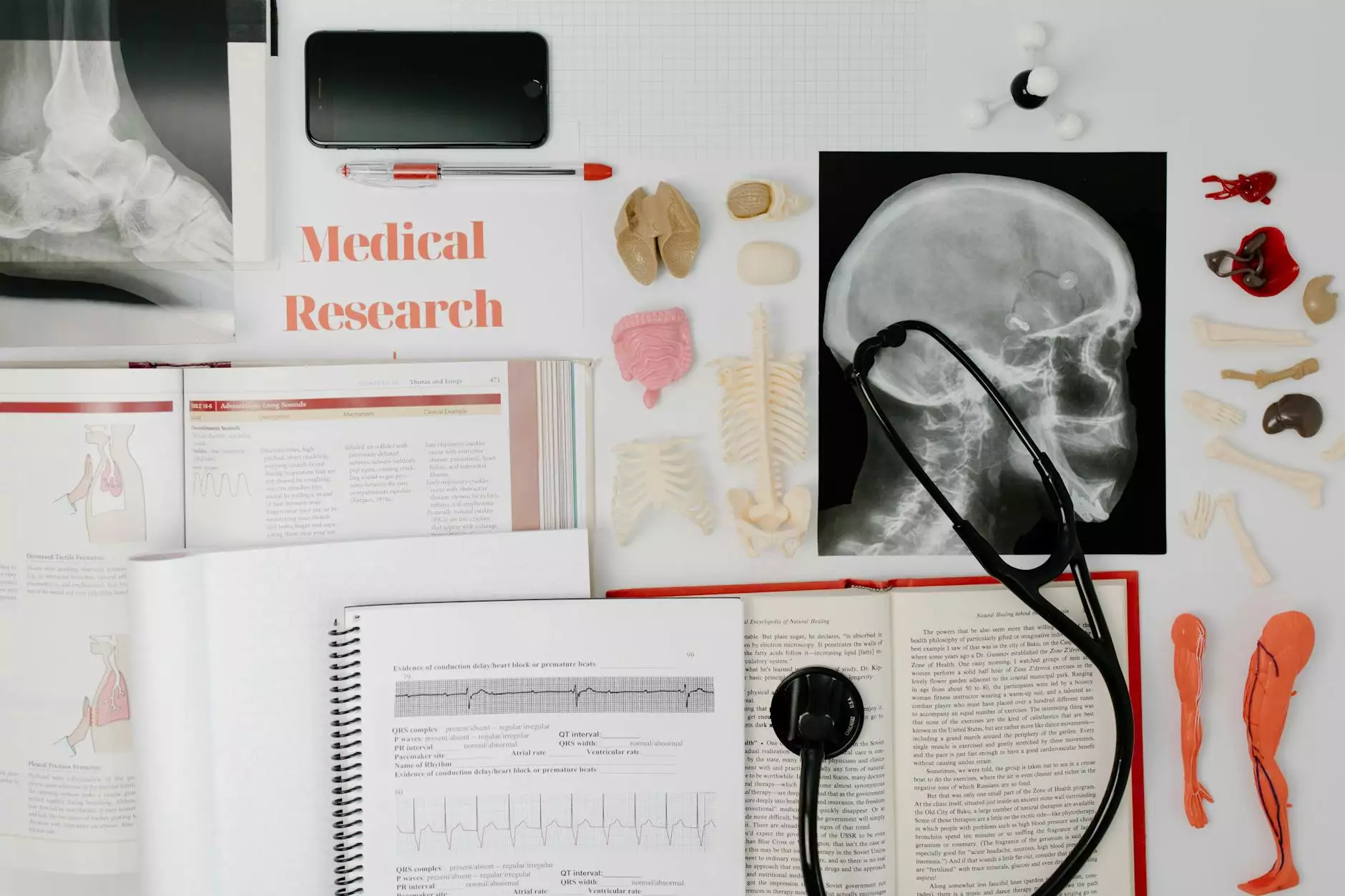Comprehensive Guide to Lung CT Scan: Essential Insights for Better Respiratory Health

The lung CT scan is an advanced diagnostic tool that has revolutionized the way respiratory conditions are detected and managed. As technology continues to evolve, medical professionals increasingly rely on this powerful imaging technique to visualize the intricate structures within the lungs, thereby enabling early detection of diseases, accurate localization of abnormalities, and effective planning of treatment strategies. In this comprehensive guide, we delve into the essential aspects of lung CT scans, their role in modern healthcare, and how they can significantly improve patient outcomes.
Understanding the Scope and Significance of Lung CT Scans
What Is a Lung CT Scan?
A lung CT scan, also known as a computed tomography scan of the lungs, is a non-invasive imaging procedure that creates detailed cross-sectional images of the lung tissue. Unlike standard chest X-rays, which produce flat two-dimensional images, a CT scan captures high-resolution slices, offering unparalleled clarity and detail. This allows healthcare providers to examine the lungs in precise detail, reducing the likelihood of missed diagnoses.
The Role of Lung CT Scans in Modern Respiratory Care
- Early detection of lung diseases: Identifying conditions such as lung cancer, infections, or chronic obstructive pulmonary disease (COPD) at an early stage.
- Assessment of lung nodules: Evaluating the size, shape, and characteristics of nodules to determine the likelihood of malignancy.
- Monitoring disease progression: Tracking changes in lung conditions over time for effective management.
- Guiding treatment: Assisting in planning surgical procedures or biopsies with precise localization of abnormalities.
- Evaluating post-treatment response: Monitoring the effectiveness of therapy, especially in cancer treatment.
Why a Lung CT Scan Is a Vital Diagnostic Tool
Advantages Over Traditional Imaging
Compared to conventional chest X-rays, lung CT scans offer greater sensitivity and specificity. The three-dimensional imaging capability allows clinicians to detect smaller lesions that are often missed in standard radiographs. Additionally, CT scans provide detailed visualization of lung anatomy, including airways, blood vessels, and surrounding tissues, which is crucial for comprehensive assessment.
Early Detection Leads to Better Outcomes
One of the most significant benefits of lung CT scans is their capacity to detect lung abnormalities early—sometimes even before symptoms manifest. Early diagnosis of lung cancer, for example, dramatically increases survival rates, enabling prompt intervention and more effective treatment options.
The Process of Undergoing a Lung CT Scan
Preparation for the Procedure
Preparation requirements are minimal but may include:
- Having a light meal if contrast dye is used.
- Removing jewelry and metallic objects that could interfere with imaging.
- Informing your doctor about allergies, especially to contrast materials.
- Discussing any existing kidney issues or pregnancy to ensure safety.
The Procedure Step-by-Step
During a lung CT scan, the patient lies flat on a motorized table that slides into the scanner's circular opening. The scan itself is quick, typically lasting between 10 to 30 minutes. The technologist may ask the patient to hold their breath for a few seconds to obtain clear images. In some cases, a contrast medium may be administered intravenously to enhance the visibility of blood vessels and differentiate tissues.
Safety and Precautions
- The procedure is generally safe with minimal radiation exposure, especially with modern scanners.
- Patients should inform the technician about pregnancy to assess radiation risks.
- Contrast allergies or kidney function issues must be disclosed beforehand.
Interpreting Lung CT Scan Results
Normal Findings
A healthy lung scan will show clear, well-defined lung fields without masses, nodules, or abnormal tissue. The airspaces will be free of air leaks or fluid accumulation, and blood vessels will appear normal.
Common Abnormalities Detected
- Nodules or masses: Small lumps that could be benign or malignant.
- Infections: Pulmonary infections like pneumonia can be clearly visualized.
- Fibrosis or scarring: Connective tissue changes indicating prior injury or chronic disease.
- Cysts or bullae: Air-filled sacs that may be associated with COPD or other lung diseases.
- Blood clots: Emboli that may be life-threatening and require urgent intervention.
Follow-Up and Further Testing
Depending on findings, your healthcare provider may recommend additional tests such as biopsies, PET scans, or pulmonary function tests to confirm diagnoses and formulate treatment plans.The Integration of Lung CT Scan in Health & Medical and Sports Medicine
In Health & Medical Practice
At clinics like Hellophysio.sg, integrated health management employs lung CT scans not only for diagnosing lung diseases but also for comprehensive health assessments, especially for high-risk populations such as smokers, aged individuals, or those with occupational exposures. The early identification of lung issues enhances preventive healthcare strategies, reducing long-term morbidity and mortality.
In Sports Medicine and Physical Therapy
While primarily associated with physical recovery and sports injury management, lung CT scans are increasingly vital in evaluating athletes' respiratory health. High-performance sports demand optimal lung function, and early detection of issues such as asthma, bronchitis, or subtle lung abnormalities can prevent serious complications. Tailoring training regimens based on detailed lung imaging ensures athletes perform at their peak with minimized risk.
Cost-Effectiveness and Accessibility of Lung CT Scans
Many modern clinics and imaging centers now offer affordable and accessible lung CT scans, recognizing their importance in early diagnosis and preventive medicine. The long-term savings from early detection—reducing the need for aggressive treatment or hospitalization—justify the initial costs. Advanced CT technology provides rapid results, allowing timely medical decisions, especially in urgent scenarios such as suspected lung cancer or COVID-19 complications.
Why Choose Hellophysio.sg for Your Lung Health Evaluation?
- State-of-the-art imaging technology: Cutting-edge CT scanners with ultra-high resolution.
- Expert radiologists and medical team: Experienced professionals for accurate interpretation.
- Personalized approach: Tailored diagnosis and treatment plans based on individual health profiles.
- Integrated health solutions: Combining physiotherapy, sports medicine, and medical imaging for comprehensive care.
Conclusion: Prioritizing Lung Health for a Better Future
The lung CT scan stands as a cornerstone of modern respiratory diagnostics, offering unparalleled visualization that empowers early intervention and effective management of lung-related health issues. Whether you are at increased risk for lung disease, recovering from respiratory illness, or seeking preventive care, understanding the significance of this technology can be transformative for your health.
By choosing a trusted healthcare provider like Hellophysio.sg, you gain access to top-tier diagnostic services integrated within a holistic health and sports medicine framework. Prioritize your lung health today for a healthier, more active tomorrow.









